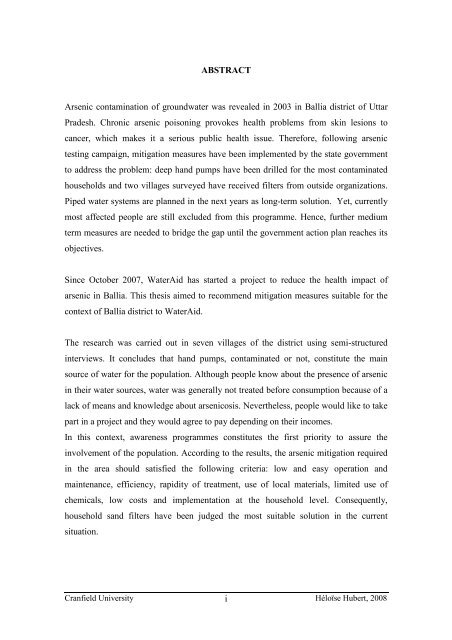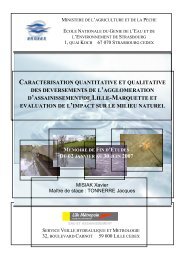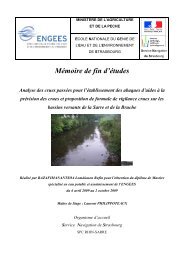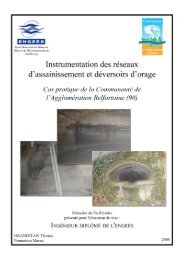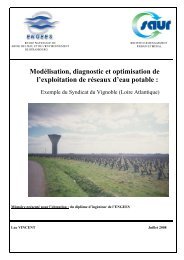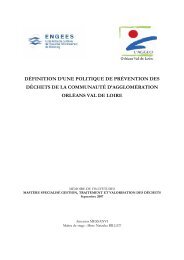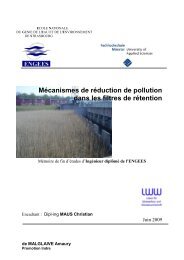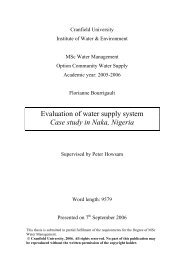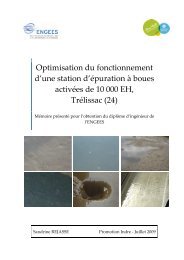Cranfield University - ENGEES
Cranfield University - ENGEES
Cranfield University - ENGEES
- No tags were found...
You also want an ePaper? Increase the reach of your titles
YUMPU automatically turns print PDFs into web optimized ePapers that Google loves.
ABSTRACTArsenic contamination of groundwater was revealed in 2003 in Ballia district of UttarPradesh. Chronic arsenic poisoning provokes health problems from skin lesions tocancer, which makes it a serious public health issue. Therefore, following arsenictesting campaign, mitigation measures have been implemented by the state governmentto address the problem: deep hand pumps have been drilled for the most contaminatedhouseholds and two villages surveyed have received filters from outside organizations.Piped water systems are planned in the next years as long-term solution. Yet, currentlymost affected people are still excluded from this programme. Hence, further mediumterm measures are needed to bridge the gap until the government action plan reaches itsobjectives.Since October 2007, WaterAid has started a project to reduce the health impact ofarsenic in Ballia. This thesis aimed to recommend mitigation measures suitable for thecontext of Ballia district to WaterAid.The research was carried out in seven villages of the district using semi-structuredinterviews. It concludes that hand pumps, contaminated or not, constitute the mainsource of water for the population. Although people know about the presence of arsenicin their water sources, water was generally not treated before consumption because of alack of means and knowledge about arsenicosis. Nevertheless, people would like to takepart in a project and they would agree to pay depending on their incomes.In this context, awareness programmes constitutes the first priority to assure theinvolvement of the population. According to the results, the arsenic mitigation requiredin the area should satisfied the following criteria: low and easy operation andmaintenance, efficiency, rapidity of treatment, use of local materials, limited use ofchemicals, low costs and implementation at the household level. Consequently,household sand filters have been judged the most suitable solution in the currentsituation.<strong>Cranfield</strong> <strong>University</strong> iHéloïse Hubert, 2008


